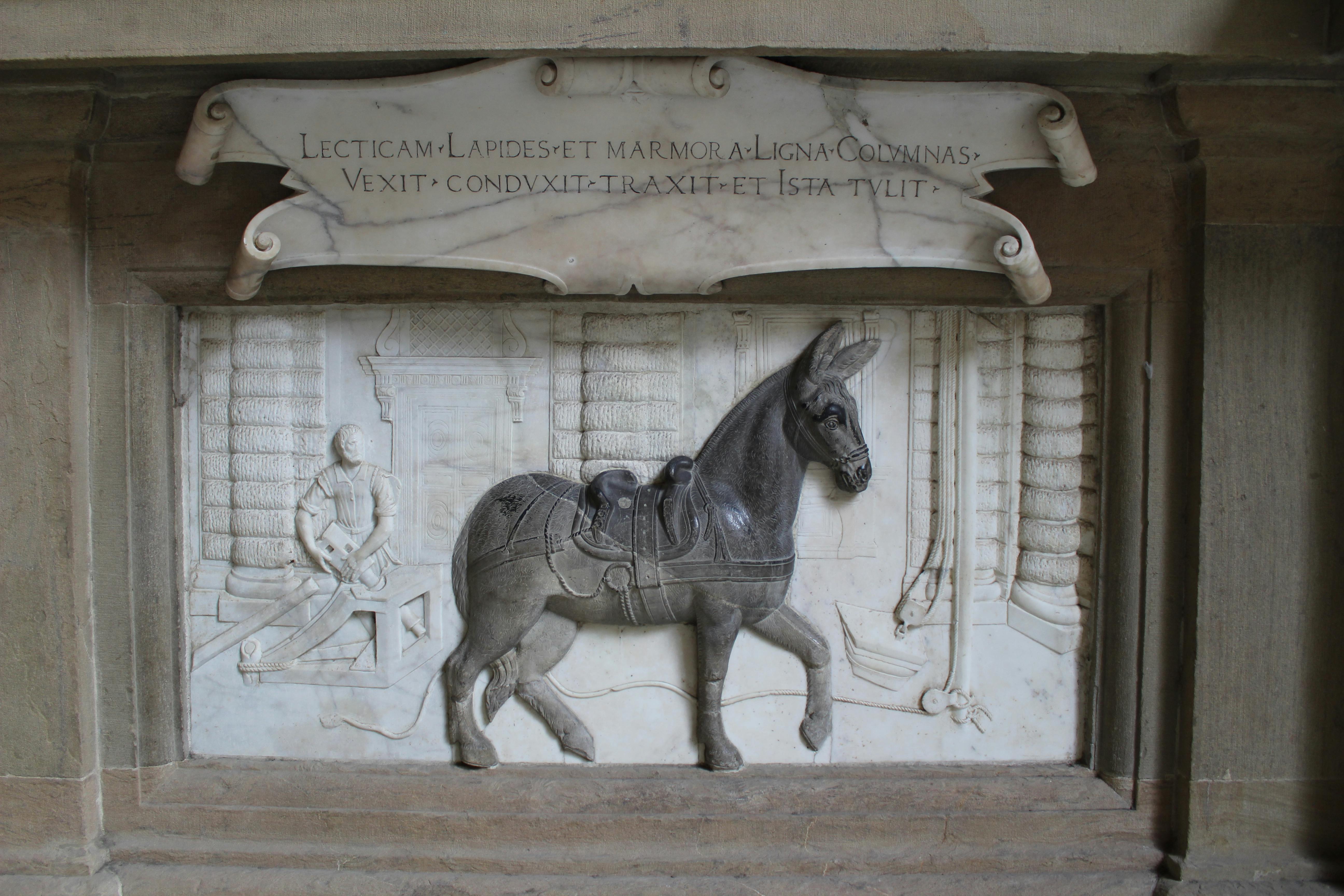Portrait of a female mule
Bartolomeo Ammannati (Settignano 1511 – Florence 1592), workshop
Cartouche inscription: “LECTICAM LAPIDES ET MARMORA LIGNA COLVMNAS / VEXIT CONDVXIT TRAXIT ET ISTA TVLIT”
At the end of the portico on the left side of the courtyard, under the niche occupied by the weary Hercules, is a two-tone bas-relief plaque showing the outline of the so-called “she-mule”, the famous female mule that, as commemorated in the Latin inscription above, “with her sacrifice, pulled and transported stone, marble, wood and columns”, labouring for years on the site of Palazzo Pitti, during the works directed by Bartolomeo Ammannati. Above the bas-relief of the mule, in a niche adapted for the occasion, is the imposing marble statue of of the weary Hercules: this placement perhaps aims to moralise, juxtaposing the mule’s hard work and effort with the large, exhausted body of the hero, resting after his feats. The background of the white marble slab uses a “stiacciato” technique, which is a very low, barely sketched-out bas-relief, used in Florence from the early decades of the 15th century to depict scenes in perspective. The Pitti Palace courtyard is shown under construction, providing us with evidence of the different types of equipment used on site during the period, such as the hoisting machines driven by the mule. The bas-relief is not particularly elegant or detailed when it comes to the anatomical detail of the animal, a fact that seems to point to the work of a member of the workshop and not Ammannati.
Weary Hercules
Roman art
